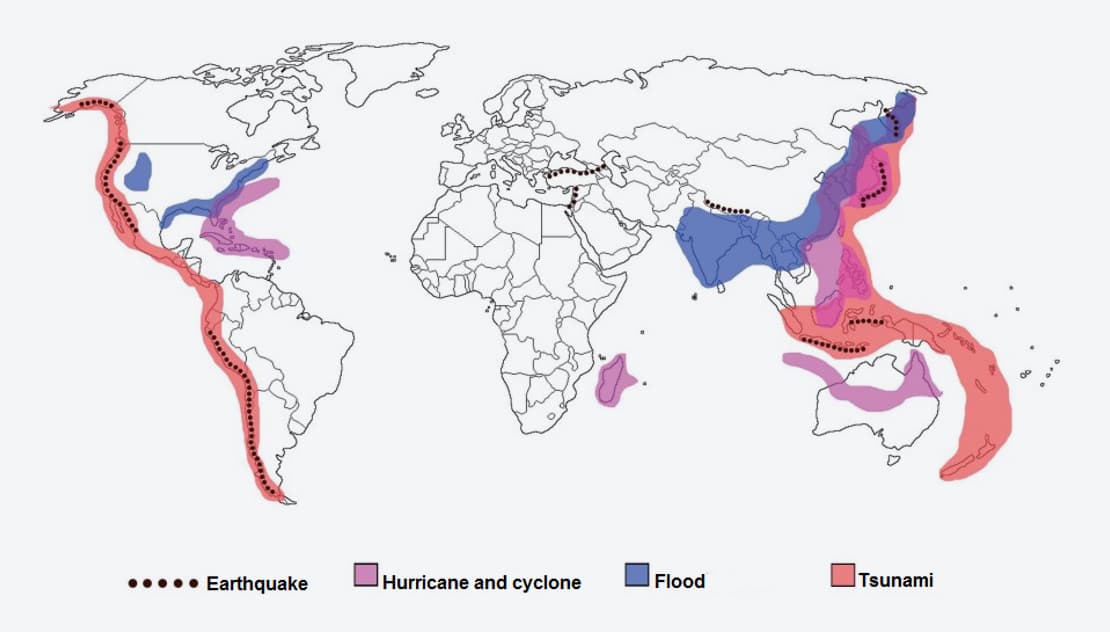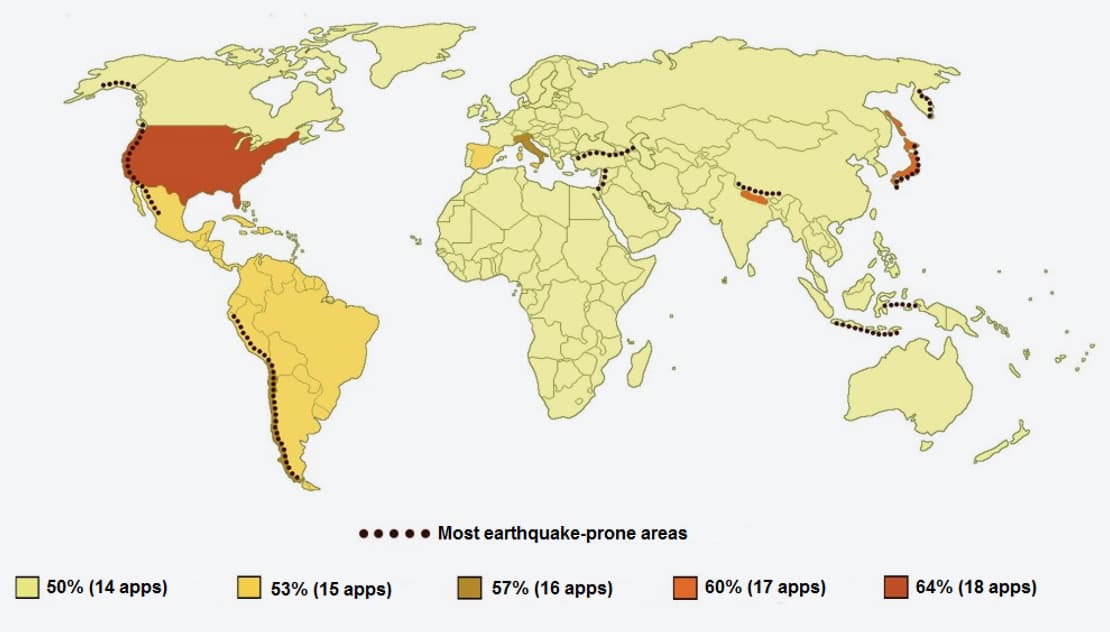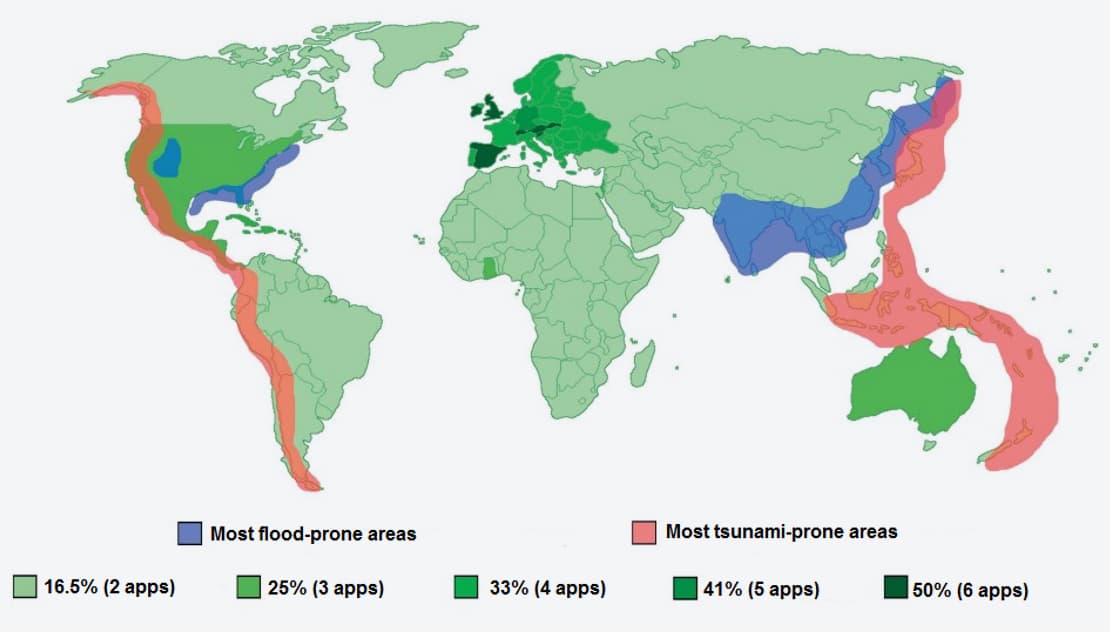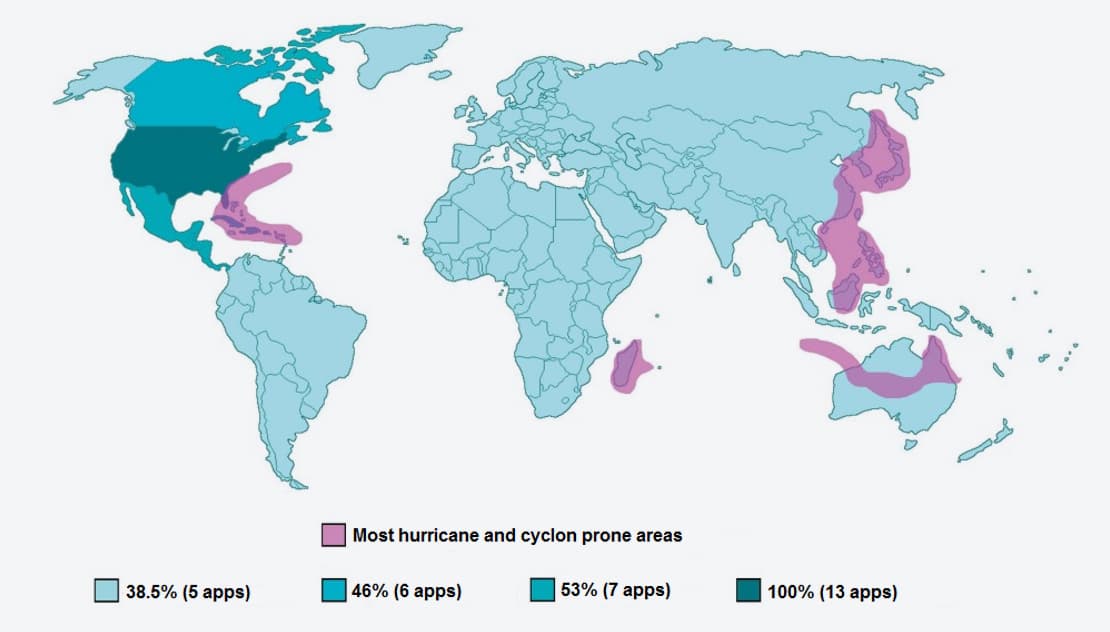Ana Campos Hidalgo
Architect, habitable housing specialist
ORCID: 0000-0002-8887-0347
New technologies are entering our daily lives every year. The use of these technologies has crystallised as a form of change that has turned society on its head in just a short span of time and will continue to do so. There will be 5.9 thousand million mobile phone users in 2025, 71% of the global population (Mobile World Congress 2019). This sea change is not restricted to advances in the world's most developed countries but is also transforming the developing countries. According to the United Nations, "Digital technologies have advanced more rapidly than any innovation in our history – reaching around 50 per cent of the developing world's population in only two decades and transforming societies. By enhancing connectivity, financial inclusion, access to trade and public services, technology can be a great equaliser".
The Internet is one of the main tools present in the complex system we call new technology thanks to both its impact and its wide reach. Global statistics indicate that 69% of the world's population has access to the Internet, though there are large differences from one continent to another. The share of Internet use is 89.7% of people living in Europe compared with just 39.3% of people living in Africa according to statistics from July 2022 (https://www.internetworldstats.com/stats4.htm). However, a series of measures, including the African Union's Digital Transformation Strategy, are set to expand this share in the near future. That strategy is a commitment by different African countries to develop the infrastructure needed to be able to improve precarious digital services and make advances in connectivity.
At the same time, use of new technology is not the only phenomenon that has increased in recent years. In the period 2000 to 2020, there were 7,348 recorded major natural disaster events that claimed 1.23 million lives (United Nations, 2020). The events that occurred most often were floods and storms, whose frequency has nearly doubled in the past 20 years. Still, the report The human cost of disasters: an overview of the last 20 years (2000-2019) points to a substantial rise in disasters of all types. These numbers are projected to continue to rise as a result of the impact of the climate crisis and the population shift into the cities, which do not have effective disaster management plans in place.
This is why it makes sense to combine the growing need for disaster prevention and management strategies with the new opportunities brought in by new technology. Despite being a growing area of study, the literature on using the Internet and other tools as resources to help us deal with extreme weather events – not to mention applications specifically designed for that purpose – is still quite sparse. That is the reason for a study into the suitability of these tools, to look at whether they could be used to prevent or report damage, and if so, how to promote their use.
Clearly, not all parts of the world suffer the same number of disasters. The Centre for Research on the Epidemiology of Disasters (CRED) reports on "events that have caused ten or more deaths, affected 100 or more people, resulted in a declaration of a state of emergency, or resulted in calls for international assistance". According to this report, from 2000-2019 Asia was the region that had the most disasters (3,068), followed by the Americas (1,756) and Africa (1,192). The countries that were most affected were China, the United States, India, the Philippines, and Indonesia (CRED). The Figure below shows the world's regions that are most likely to suffer different kinds of disasters.

Figure 1. Map of exposure to different extreme natural events.
Source: By the author using data from the Internal Displacement Monitoring Center (IDMC).
Nevertheless, the fact that a given area is frequently affected by adverse natural events does not necessarily make it a vulnerable area. To borrow the Norwegian Refugee Council's definition of vulnerability: "the set of factors that increase or decrease the impact of a disaster on a community". That is, the probability that a given natural event will strike is not enough. There are also other factors such as the level of socioeconomic development, cultural circumstances, geography, and unplanned urban growth. This brings us to an important basic consideration: not all extreme natural events turn into natural disasters. A series of factors that adversely affect a community have to come together, chief among them that community's own ability to recover after an event. On that basis, the term "natural disaster" as used in this article will mean a critical natural event that has a sizeable adverse impact on the human population.
Vulnerability is the concept that is most often used when designing new disaster prevention and mitigation policies. This is not always an easy task. It is readily definable, but precisely measuring its indicators is not so easy. For example, for years the Inter-American Development Bank (IDB) has been developing a series of disaster risk indicators to be used as institutional guidelines for proposing changes to disaster preparedness and management policies. Namely:
To be able to measure these indices, the IDB is currently developing new technologies for measuring vulnerability aimed at forecasting potential future economic losses and human casualties. On that basis, it is not misguided to think that mobile applications may play a fundamental role in developing these technical tools. Not just because of the programming opportunities they bring but also because they can fit in a device that large numbers of people vulnerable to a natural disaster can carry in their pocket.
Years of studying disaster risk and vulnerability have enabled us to map the countries most likely to suffer certain extreme events worldwide with a quite acceptable level of precision. These are countries that are frequently struck by disasters whose governments do not have sufficiently effective management or recovery mechanisms in place to enable people to surmount the adverse repercussions within a short span of time. In addition, we have also added an index for gauging the use and suitability of mobile applications designed to be employed in connection with natural disasters. A previous study (Análisis de aplicaciones digitales empleadas en catástrofes naturales, 2020) evaluated 60 applications for use in the pre-disaster phase to announce where and when the event is about to strike, and 12 applications for use in the post-disaster phase to gather information on the victims and their location after an event has already taken place. That study has been taken used to compare data for countries in different parts of the world that experience the most natural disasters and potential use of applications in connection with specific disasters. This will provide a new vulnerability index linked to the level of use of these technologies. Such aspects as access to mobile telephones by the population aged 15 and over, Internet connectivity, mobile network coverage, and availability of electric power have been taken into consideration.
Based on the above data set, the countries around the world where natural disasters are most likely to occur and also where access to digital technology that can be used to deal with them is limited are The Philippines, Bangladesh, Nepal, Guatemala, Costa Rica, Nicaragua, El Salvador, Honduras, Haiti, Dominican Republic, Madagascar, and Mozambique.
In addition, a series of vulnerabilities to some of the most common natural events have also been considered. The methodology used has entailed correlating the regions worldwide where earthquakes most commonly strike (and where they cause the most personal injuries) with the factors regarding use of applications specifically intended for use in the event of an earthquake referred to above (Displacement Monitoring Center). This places the focus on those parts of the world where earthquakes tend to be relatively common but there are not enough digital applications available for use for purposes of prevention or mitigation.

Figure 2. Map of earthquake exposure correlated with the number of available specialised applications for use in dealing with earthquakes.
Source: By the author using data from the Internal Displacement Monitoring Center (IDMC).
Figure 2 shows that there are a number of regions vulnerable to this sort of disaster. China, for instance, is a country where incentivising mobile applications could be extremely helpful, since according to the latest World Bank data, 73% of the population uses the Internet. Furthermore, the statistic for mobile telephone service subscribers is even higher, up to 122%. Singapore, with a level of mobile telephone subscribers totalling 144% and Internet penetration of 84%, is another vulnerable country that could benefit from management plans involving the use of mobile applications.
In contrast, this strategy would not be so effective in Pakistan. Even though earthquakes are frequent in the area and mobile telephone subscribers are at the level of 82%, in 2020 only 25% of the population were Internet users on any type of device.
Earthquakes often strike the west coast of South America, where the Nazca tectonic plate collides with the South American plate. However, more applications for dealing with earthquakes are available in these countries, though we also have to look at their impact to be able to suggest improvements to current applications and disclose any deficiencies they might have.
This same method has been applied to regions where flooding commonly occurs and areas that have specific applications for that purpose.

Figure 3. Map of flood exposure correlated with the number of available specialised applications for use in dealing with floods.
Source: By the author using data from the Internal Displacement Monitoring Center (IDMC).
The comparison of these data shows that the region with the most specialised flood disaster applications, Europe, is not the region with the most floods. In contrast, India, Bangladesh, Nepal, Cambodia, and certain regions in China tend to be relatively prone to flooding and do not have many applications that can be used to alert the population or to call for help if evacuation or rescue is needed. The same can be said of the lands situated in Southeast Asia and the countries on the west coast of South America, potentially vulnerable to frequent flooding from tsunamis.
Of these countries, the one that could benefit the most from using mobile applications as a disaster management tool is Chile, where 88% of the population uses the Internet and the mobile phone subscription rate is 136%. Peru is in a similar situation, with a mobile phone subscription rate of 128% and a rate of Internet use of 71%. In contrast, introducing applications would not be as effective in the Asian countries named above, at least for the time being. Though 82% of people in India are mobile phone subscribers, only 43% of the population regularly uses the Internet. The situation is similar in Bangladesh, where the rate of Internet use drops to 25%.
Lastly, attention has been turned to countries' vulnerability to hurricanes. The Comisión Nacional de Prevención de Riesgos y Atención de Emergencias [National Commission for Risk Prevention and Emergency Response] considers a hurricane to be a meteorological phenomenon with winds faster than 200 km/h produced by the interaction between warm, moist air from the ocean and cooler air.

Figure 4. Map of hurricane exposure correlated with the number of available specialised applications for use in dealing with hurricanes.
Source: By the author using data from the Internal Displacement Monitoring Center (IDMC).
The Central American region has a number of islands that are exposed to hurricanes and strong winds. There are, however, different applications specifically designed for use with this type of natural event in those countries. This is not the case for East Asia or Madagascar.
Even so, this type of event is not particularly well suited for digital management applications, because the countries where they occur most frequently do not yet have adequate tools to enable them to reach a large percentage of the population. In Haiti, for instance, only 35% of the population uses the Internet and a little over half (65%) are mobile telephone subscribers. These figures are even lower in Madagascar, with 15% frequent Internet users.
The conclusion that can be drawn is therefore that digital applications can be integrated into disaster prevention, mitigation, and management plans in places where the population knows how to use mobile devices and where secure data networks are in place. In addition to this factor, assessment of these sorts of application has disclosed a series of other factors that need to be taken into account with a view to implementing help tools.
First, many available disaster prevention and alert applications are in English. Even though English is the language most commonly used on digital media, it is the native tongue of only 5.3% of the world's population (Worlddata: the World in numbers). For everyone else, it is their second or third language, and on the whole it will be known mainly by persons with a higher level of education in more urban settings. This situation can give rise to, one, misunderstandings technical terms little known to most people are encountered, and, two, in parallel, to discrimination, mostly of people of limited means living in more rural areas who have not been able to learn English. Additionally, these are the same people who are most vulnerable to disasters, since they live in gentrified areas without the benefit of planning.
Another aspect that needs to be considered is that even though demand for the services provided by these applications is growing, most have been developed and are operated by private companies. Only a small percentage have been developed by public enterprises that offer them as a public service for information, training, and preparedness purposes in case of disaster events. Furthermore, nearly all these applications include a clause in their privacy policies entitling their operators to share user data with third parties and to sell the data entered into these applications for advertising or business purposes. This means they can be used to serve the interests of companies that have a need to know where and when a disaster has occurred and the people who have been affected by a natural disaster event to do business and engage in sales campaigns in the affected areas.
Costa Rica is situated in a part of the world that is highly vulnerable to natural disasters. According to the United Nations University's World Risk Index, it ranks fifth in level of exposure. This is exacerbated by a lack of urban planning, high population density, and poor land use practices that aggravate the situation further (University of Costa Rica).
It is located where the Cocos tectonic plate abuts the Caribbean plate, making it a country prone to severe seismic events, and there are also volcanoes close to population centres. In addition, its placement in the Caribbean region means that it is a multiple hazard zone that suffers frequent hydrometeorological disasters such as torrential rains, cyclones, and floods. Although hurricanes form in the Caribbean Sea, they affect the Costa Rican Pacific coast due to the circulation of winds and the Intertropical Convergence Zone movement towards the country. The "El Niño" began to have very intense effects in the first quarter of 1997. It produces heavy rains and droughts and very high temperatures on an ongoing though irregular basis. This results in falling agricultural production and economic losses and is detrimental to the quality of life of the population as a whole, which have been aggravated in recent years (ECLAC).
The most recent major disasters include Hurricane Nate with 48 fatalities in 2016, the 2009 earthquake with 25, Tropical Storm Alma with 11 fatalities in 2008, and the landslide in Las Hayas with 21.
At the present time, the Comisión Nacional de Prevención de Riesgos y Atención de Emergencia [National Risk Prevention and Emergency Management Board] is the organisation in charge of coordinating natural disaster preparedness. This institution has drawn up threat maps for different areas of the country that describe the specific geological and hydrometeorological hazards in each area with recommendations for mitigating their impact. This information could be included in digital applications in both written and pictorial form to reach a large segment of the population. It also has a collection of rules to be followed and documents with basic aspects for organising and operating municipal disaster risk management offices.
As a country Costa Rica has in recent years made great efforts to engage in technology transformation to boost development. Starting in the 1990s, it fostered stimulus programmes aimed at creating applications to develop low-cost technologies and training projects. Nevertheless, these programmes have failed to produce ongoing strategies and publicly funded policies in line with actual needs. There has, however, been increased investment in science and technology in the last year, amounting to 2.17% of GDP in 2020 (Swissinfo).
Based on data on the use of technologies necessary to be able to implement mobile applications for use as disaster management tools in Costa Rica, 86% of the population are Internet users, and there are 8.88 million mobile telephone subscribers, equivalent to 178% of the population. This means that some people have more than one mobile telephone, either for personal or business use. Furthermore, 72% of the population regularly uses social media in their daily lives (GSMA Intelligence).
Costa Rica's Centro Nacional de Política Económica para el Desarrollo Sostenible [National Economic Policy Centre for Sustainable Development] conducted a study on technology use in that country and made the following findings:
Costa Rica can thus be seen to have a large population of mobile telephone subscribers. People also commonly use this medium to get news and stay informed of events in the country and around the world. The population therefore has an integrated digital culture. One contributing factor to this is that 80% of the inhabitants live in urban areas (GSMA Intelligence), where technology use is more widespread and people adopt new technologies more quickly. This means that digital applications for coordinating with early warning systems and rescue services could meet with wide acceptance by the population.
Network outages are the most common user complaint. This is a problem, because if a natural disaster strikes, loss of telephone service could prevent these applications from being used. So improving the infrastructure of systems in urban areas is a necessity. The possibility of routing Internet services via satellite in rural areas where cable service cannot be assured therefore needs to be looked into. The rural population is the most vulnerable to the events considered here. Besides improving material conditions, it is also necessary to implement social training mechanisms to raise digital literacy and empower community leaders.
Lastly, Costa Rica is continuously reviewing and revising its disaster hazard management manuals. However, to date none of these revisions has included any technology tool for use by the population to coordinate with hazard warning and management systems. The specific proposal for Costa Rica would be to take all the data compiled on the threat maps and in the alert systems and enter them into a publicly developed application to be placed at the service of the public. People have grown accustomed to receiving news and messages from acquaintances or friends on a daily basis and consequently could also become used to receiving alerts about disaster events, advisories on action to be taken, information of interest, and rescue service information after the event.
In an ever more digital world, there can be little doubt that using tools developed to mitigate the impact of extreme events of all kinds will become more commonplace in the future. In particular, using mobile telephone applications specially designed for use in connection with disasters could serve to alert the population in the lead-up to an event, assist with communications between the people and emergency services, or report the exact location of damage in the aftermath of the event.
However, the applications cannot be used the same way all over the world. First, each country's vulnerability to different types of adverse events needs to be taken into account. There are many exposure maps showing the natural hazards that occur most often in different parts of the world. In any case, the growing trend in recent years suggests that additional countries are likely to suffer adverse impacts from growing numbers of natural disasters and that many cities are not prepared to deal with them.
Second, the status of new technologies, especially mobile telephone and Internet use, in each of these countries is also a relevant factor. Even though the world is an ever more connected place, digital illiteracy, no Internet connectivity, and even no electricity are still commonplace in many parts of the world. Moreover, these are the same regions that are the most vulnerable to disasters because of a dearth of planning and social policies and very poor living conditions.
In conclusion, digital applications may serve as a tool that institutions in charge of disaster management can put to use to establish two-way communications and mitigate adverse impacts, which will intensify in the coming decades. Nevertheless, the authorities must all be aware of the social and digital contexts in which they are operating, must buttress the areas that are most neglected, and must arrange specific solutions capable of reaching as many people as possible.
Campos, A.; Barbero-Barrera, M. (2021). Evaluación de la digitalización frente a
los desastres naturales: Los casos de Guatemala, Costa Rica y Nicaragua.
Revista Fomento Social, 75/3 (298).
https://doi.org/10.32418/rfs.2020.298.4343
Center for Research on the Epidemiology of Disasters (CRED). (2023).
https://www.cred.be/
Colegio Oficial Ingenieros de Telecomunicación. (2023) ¿Podrá tener África un
futuro digitalizado? https://www.coit.es/noticias/podra-tener-africa-un-futuro-
digitalizado
Comisión Nacional de Prevención de Riesgos y Atención de Emergencias de
Costa Rica (CNE). (2023). https://www.cne.go.cr/
Global System for Mobile Communications (GSM). (2023).
https://www.gsmaintelligence.com/
Inter-American Development Bank (IDB). (2023). https://www.iadb.org/en
Internal Displacement Monitoring Center (IDMC). (2023). https://www.internal-
displacement.org
Internal World Stats. (2023). https://www.internetworldstats.com/stats.htm
McClean, D. (2020). #DRRday: UN Report charts huge rise in climate disasters.
United Nations Office for Disaster Risk Reduction (UNDRR).
https://www.undrr.org/quick/13070
Mobile World Congress. (2023). https://www.mwcbarcelona.com/
Navarro de Corcuera, L.; Barbero-Barrera, M.M.; Campos Hidalgo, A. y Recio
Martínez, J. (2022). Assessment of the adequacy of mobile applications for
disaster reduction. Environment, Development and Sustainability, 24, 6197–
6223. https://doi.org/10.1007/s10668-021-01697-2
Norwegian Refugee Council. (NRC). (2023). https://www.nrc.no/
Swissinfo. (2022). La inversión en ciencia y tecnología alcanzó el 2,41% del PIB
en Costa Rica. https://www.swissinfo.ch/spa/costa-rica-tecnolog
%C3%ADa_la-inversi%C3%B3n-en-ciencia-y-tecnolog%C3%ADa-alcanz
%C3%B3-el-2-41---del-pib-en-costa-rica/48120792
United Nations Development Programme (UNDP). (2023).
https://www.undp.org/
United Nations. (2023). The Impact of Digital Technologies.
https://www.un.org/en/un75/impact-digital-technologies
Universidad de Costa Rica: https://www.ucr.ac.cr/noticias/2017/12/15/costa-
rica-no-es-un-pais-sostenible.html
World Bank Open Data: https://data.worldbank.org/
World Bank. (2016). Shock Waves: Shock Waves: Managing the Impacts of
Climate Change on Poverty. Climate Change and Development.
http://hdl.handle.net/10986/22787 and
https://data.worldbank.org/indicator/IT.CEL.SETS.P2?locations=PK
World Health Organization (WHO). (2023). https://www.who.int/

Digital applications can be integrated into disaster prevention, mitigation, and management plans in places where the population knows how to use mobile devices and where secure data networks are in place.
Even though demand for the services provided by these applications is growing, most have been developed and are operated by private companies. Only a small percentage have been developed by public enterprises that offer them as a public service for information, training, and preparedness purposes in case of disaster events. Furthermore, nearly all these applications include a clause in their privacy policies entitling their operators to share user data with third parties and to sell the data entered into these applications for advertising or business purposes.